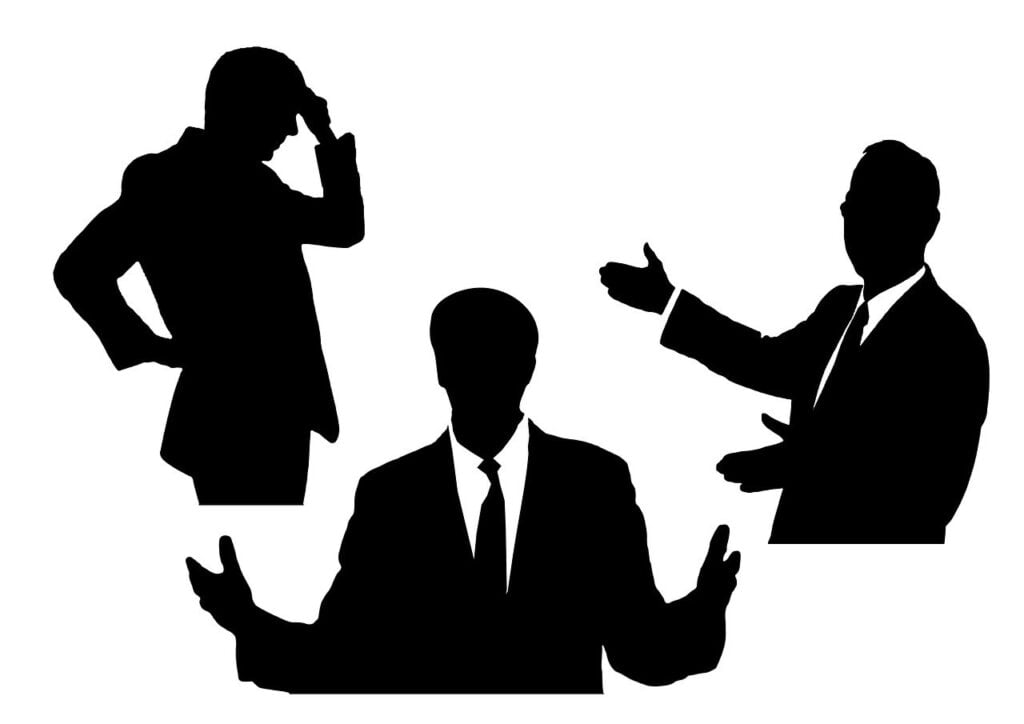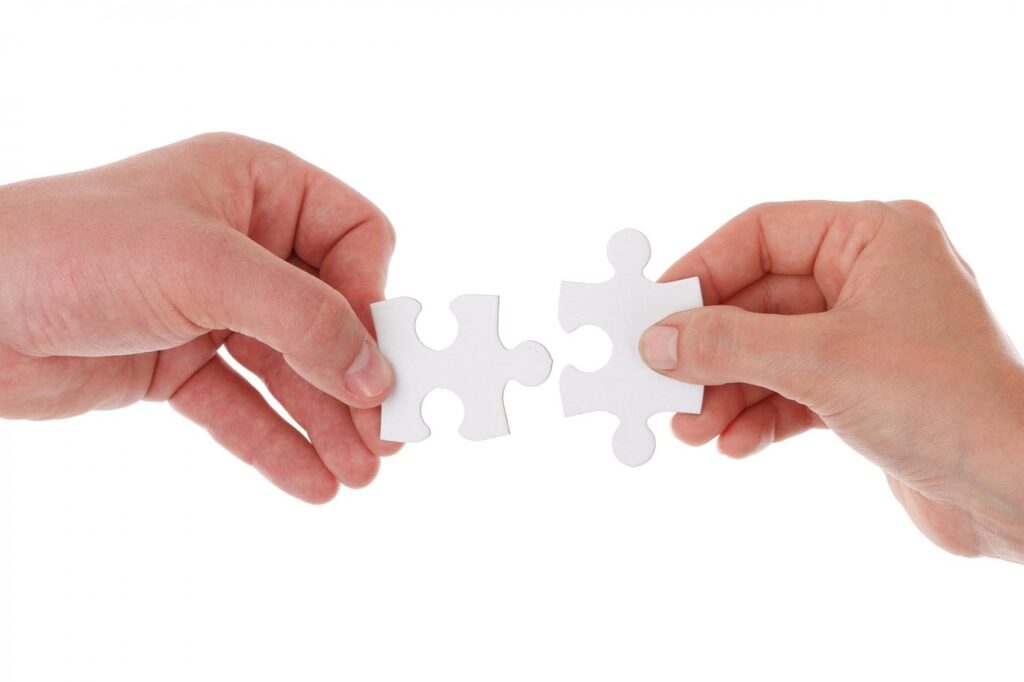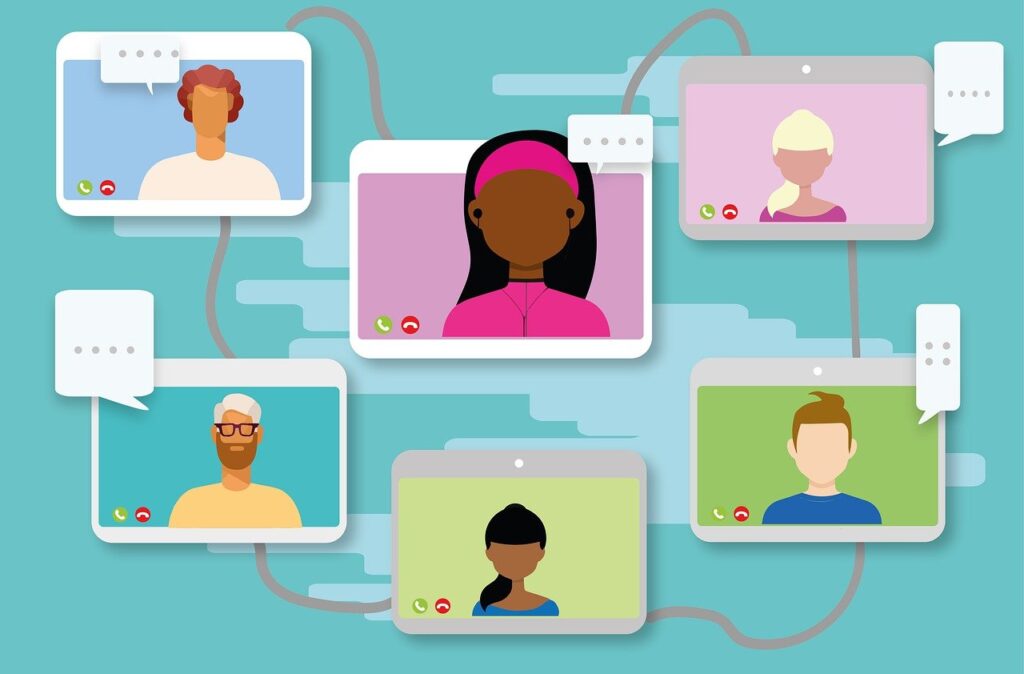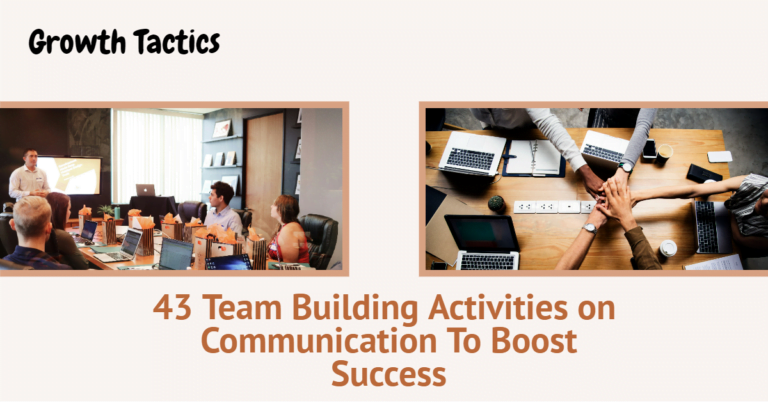Effective communication is critical for teams to succeed in the workplace. Team building activities focused on improving communication skills can greatly benefit workgroups and lead to higher performance.
When team members communicate clearly, listen actively, and provide constructive feedback, it builds trust, alignment, and productivity. On the other hand, unclear or inconsistent messages, talking over each other, and lack of empathy can create confusion, frustration, and division. That’s why doing team building activities to enhance communication is so valuable.
Team building activities on communication skills help in several key ways:
- Break down barriers and enable open communication
- Improve active listening, verbal, nonverbal and virtual communication
- Develop conflict resolution and feedback skills
- Promote collaboration, creativity and sharing of ideas
- Identify gaps in communication styles and preferences
- Strengthen relationships and understanding among team members
With better communication, teams can avoid misunderstandings, resolve issues faster, collaborate more smoothly, and deliver better results. Fun and engaging communication-focused team building activities can make a big difference in bringing out the best in a team.

Jump To Section
Nonverbal Communication Activities
Nonverbal communication makes up a significant portion of how we communicate and build relationships in the workplace. Activities focused on nonverbal communication skills can help team members become more aware of their body language, facial expressions, eye contact, and other forms of non-speech communication.
Some examples of straightforward nonverbal communication games and exercises include:
- Mirroring – Participants pair up and mirror each other’s movements and gestures. This helps build awareness of nonverbal cues.
- Gesture Charades – Individuals act out a word or phrase using only nonverbal communication. The rest of the team tries to guess what they are conveying. This exercise highlights the importance of body language.
- Nonverbal Communication Charades – Similar to regular charades, but no verbal communication is allowed. Teams must act out concepts and guess solely based on nonverbal cues.
- Observation Activity – Team members pair up and observe each other’s nonverbal communication during a short conversation. Afterwards, they provide feedback to each other about what signals and cues they noticed.
- Body Language Analysis – Show video clips of different body language examples and have teams discuss what is being conveyed nonverbally.
These nonverbal communication activities help team members pay closer attention to nonverbal signals, improve their nonverbal communication skills, and build understanding between team members. The activities make nonverbal communication fun to learn.
Active Listening Exercises
Active listening is one of the most important skills for effective communication within a team. It demonstrates respect, builds trust, and leads to greater understanding. Active listening involves not just hearing what someone says, but really listening and understanding it.
Some key elements of active listening include:
- Maintaining eye contact and giving your full attention
- Avoiding distractions and multitasking
- Reflecting back what you heard to confirm understanding
- Asking open-ended questions to encourage more detail
- Summarizing key points
- Providing feedback and interpreting body language
Participating in active listening exercises and games helps team members become better, more mindful listeners. Here are some fun activities to build active listening skills:
Whisper Challenge – One team member wears noise-canceling headphones while another gives them instructions to complete a simple task. This silly exercise highlights how much we rely on hearing clearly.
Storytelling – In pairs, have one person tell a story and the other re-tell it to the group. See how well key details were retained.
Drawing Game – One person describes a simple picture while their partner draws just based on verbal instructions. Compare the original and the drawing after.
One-Word Story – In a circle, each person says one word to add onto a story. Stay focused on the growing narrative and each new contribution.
Blind Shape – One partner has a shape and describes it for the other to recreate blindfolded using modeling clay. No peeking allowed!
Regularly practicing active listening as a team improves comprehension, avoids miscommunications, and brings the group closer together through deeper understanding. Make listening exercises a fun part of team building activities.

Verbal Communication Games
Verbal communication is an essential skill for teams to master. Games and exercises focused on verbal communication can help improve clarity and understanding among team members.
Some examples of fun verbal communication games include:
- Charades: This classic game has teams act out different words and phrases without speaking. Team members must use nonverbal cues to guess the term. This exercises helps teams practice expressing ideas without words.
- Storytelling: Gather the team and have each person add onto a story one sentence at a time. This game promotes listening skills, creativity, and thinking on your feet. See how long the team can keep the story going.
- Drawing directions: Have one team member verbally guide another person through drawing a picture or diagram. This activity highlights giving clear verbal instructions.
- Password: For this word guessing game, one person knows a secret word and can only provide one-word clues to their teammate. It practices conveying ideas concisely.
- Impromptu speeches: Give team members random topics and have them give a 1-2 minute impromptu speech. This boosts verbal communication abilities.
- Puzzles: Provide teams with puzzle pieces and have them verbally guide each other through assembling it without looking. This unique challenge builds verbal skills.
Getting team members talking, explaining ideas, and describing things creatively helps sharpen verbal communication abilities. Debrief after games to discuss what communication techniques worked well. With practice, teams can better convey messages, provide clear direction, and avoid miscommunication through verbal means.

Team Collaboration Activities
Collaboration is essential for effective workplace communication. When teams work together on challenges that require input from everyone, they build trust and communication skills. Here are some examples of collaborative team exercises:
The Egg Drop
Give each team basic supplies like straws, tape, and paper. Their goal is to build a container that will prevent an egg from cracking when dropped from a height. This activity emphasizes problem-solving, creativity, and working together towards a common goal. Members must communicate roles, ideas, and solutions.
Deserted Island
Split the team into groups and give them a list of items. Each group must agree on a ranking for the objects’ importance to survival on a deserted island. This open-ended challenge sparks discussion and requires teams to find consensus.
The Human Knot
Have people stand in a circle and grab hands with others across from them. The goal is to untangle the knot of human arms without letting go. To succeed, they’ll need to communicate clearly and work together step-by-step. This silly activity breaks the ice and highlights nonverbal communication.
Scavenger Hunt
Hide objects around the office and split into teams with a list. Teams race to find all items, requiring collaboration, communication, and problem-solving. To up the ante, have teams photograph themselves with objects. It builds camaraderie through friendly competition.
Escape Room
Set up a themed escape room with puzzles and clues leading to a goal. Give the team 60 minutes to escape using teamwork, communication, and critical thinking. Escape rooms teach the value of diverse input and open discussion. Debrief after on takeaways.
Communication Style Assessments
Understanding the different communication styles of team members can greatly improve collaboration. Personality and work style assessments help identify how each person prefers to communicate and process information.
There are a variety of frameworks that categorize communication styles, such as DISC personality types (Dominance, Influence, Steadiness, Conscientiousness) or learning styles like visual, auditory, reading/writing, kinesthetic. Once team members understand their own style and recognize the styles of others, they can adjust their communication approach accordingly.
For example, an auditory learner may prefer verbal instructions and discussions, while a visual learner wants to see things written down or diagrammed. Being aware of these differences prevents miscommunications and helps build stronger connections between team members.
Some activities to try include:
- Have each person take a free DISC or learning styles assessment, then share and compare results in a group discussion. Look for patterns and insights that explain preferences and work styles.
- Role-play various scenarios where communication styles clash and practice adjusting language, tone, and format to meet the needs of different team members. Reflect on what was learned.
- When giving feedback or updates, tailor your approach to the style of each recipient. An influence-based colleague may want a quick enthusiastic verbal recap, while a steadiness-based co-worker prefers written details sent via email for later review.
The goal of communication style assessments is not to put people in boxes but to understand and appreciate the diversity of needs, preferences, and tendencies within a team. Adapting our communication makes collaboration more effective and builds stronger workplace relationships.
Conflict Resolution Activities
Conflict is inevitable in any workplace. When unaddressed, conflict can lead to decreased productivity, low morale, and high turnover. That’s why team building activities focused on conflict resolution are so valuable. These activities teach team members how to communicate openly, build trust, and resolve disagreements in a healthy manner.
Roleplaying is one effective technique for conflict resolution training. The facilitator can act out common conflict scenarios like an argument between colleagues. Teams observe the roleplay and then discuss positive and negative conflict resolution approaches demonstrated. Roleplaying builds empathy and understanding of different perspectives when resolving conflict.
Difficult conversations are a major source of conflict. Activities that practice having crucial conversations in a safe environment help team members gain confidence. One exercise is to have pairs roleplay giving critical feedback on a work product. The emphasis is on delivering critique constructively and maintaining mutual respect.
Trust falls and personal sharing activities allow team members to open up about vulnerabilities and develop mutual trust. When there is trust among the team, conflict can be addressed without fear of judgement or repercussions. Participants feel safe admitting mistakes and constructively working through disagreements.
In summary, conflict resolution training equips teams to handle workplace disagreements maturely. With roleplaying, conversation practice, and trust-building, teams gain the communication skills necessary to resolve conflict in a healthy manner. This leads to stronger relationships, improved morale, and higher performance.

Virtual Team Building for Communication
Remote work has become more common, presenting unique communication challenges for teams. Virtual team building activities can help strengthen connections and communication between remote team members.
When working remotely, communication barriers like lack of nonverbal cues or “watercooler talk” can hinder team cohesion. Activities that encourage informal connection can help.
Some ideas for virtual team building activities include:
- Virtual coffee or lunch dates. Randomly pair up team members for a 30 minute video chat to get to know each other better. Conversation prompts or icebreakers can help break the ice.
- Online games. Multiplayer games like Jackbox, Skribbl or Codenames played over video chat can spark creativity and friendly competition.
- Digital scavenger hunts. Give teams a list of silly items or tasks and have them take photos or videos as proof. This gets people engaged and working together.
- Remote charades. Use screensharing and gesturing to act out words and phrases for teammates to guess. It leads to laughter and teamwork.
- Storytelling exercises. Have each person add a sentence or paragraph to a shared document to create an evolving story.
- Virtual escape rooms. Work together to solve puzzles and clues within a given time limit.
- Show and tell sessions. Each person briefly shares an item, photo, talent or fact about themselves for the team to learn more about each other.
Dedicate time for regular virtual team building to maintain strong relationships and communication channels for remote teams. Activities that are fun, interactive and relationship-focused can build trust and improve collaboration. With creativity and intentionality, a sense of team spirit can thrive even from afar.
Leadership Communication Activities
Effective leaders understand the importance of communication in bringing teams together and achieving goals. Team building activities focused on leadership communication skills can help managers become better communicators.
Leaders play a key role in facilitating open communication among team members. They set the tone for meetings, presentations, and everyday interactions. Leadership communication activities can train leaders how to create an environment where people feel comfortable expressing ideas and opinions.
Some examples of leadership communication exercises include:
- Leading Meetings Roleplay – Assign one person to be the team leader running a meeting. Have them practice skills like creating an agenda, encouraging participation, resolving conflicts, and summarizing decisions. The rest of the group acts as team members and provides feedback.
- Presentation Workshop – Ask leaders to prepare short presentations and deliver them to the group. Focus on skills like eye contact, vocal variety, body language, and connecting with the audience. Participants can give constructive feedback on what the leader did well and areas to improve.
- Interview Coaching – Leaders pair up and take turns practicing responding confidently during media interviews, Q&A sessions, and impromptu workplace interactions. Partners provide tips on conveying authority, thinking on your feet, and answering effectively.
- Team Vision Activity – The leader shares their vision for the team and outlines key goals. Team members then discuss how to align individual roles to support the broader mission. This fosters a shared sense of purpose.
Regular practice through team building activities helps leaders become stronger communicators. They learn how to bring people together around a common goal, resolve issues, and motivate teams to peak performance. Strong leadership communication creates cohesion, trust, and success.
Conclusion and Key Takeaways
Team building activities focused on communication are a great way to boost team success. By participating in various games, exercises, and activities together, team members can improve their listening skills, verbal communication, collaboration, and conflict resolution.
The key takeaway is that good communication is an ongoing process that requires continual effort and improvement. Even teams that already communicate well can benefit from team building around core communication skills.
In summary, some of the most impactful communication-focused team building activities include:
- Nonverbal communication games to practice conveying ideas through body language, facial expressions and more. These help build trust and understanding.
- Active listening exercises to improve focus, comprehension, and retention of information shared by others. This leads to fewer misunderstandings.
- Verbal communication activities to practice articulating thoughts and concepts clearly and concisely. This enhances team discussions and decision making.
- Team collaboration games to build cooperation, coordination, and synergy among members. This results in better solutions and innovations.
- Conflict resolution scenarios to constructively work through disagreements. This creates a more positive team environment.
With a commitment to building communication skills through engaging team activities, any team can significantly improve performance, morale, and results. The ability to effectively share ideas, actively listen, discuss differences, and work together is foundational to success.


